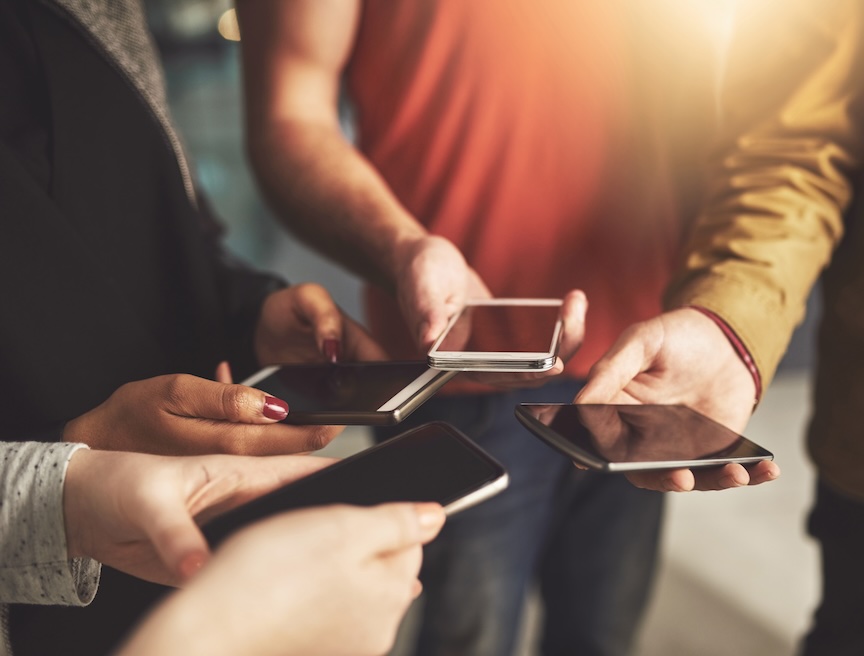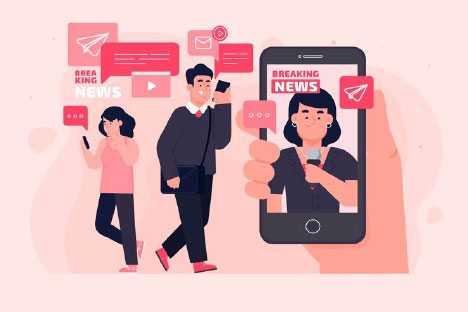Revolutionizing Connectivity: The Role of Mobile Phones in Modern Social Movements
by Frances Libby
Mobile phones were used to organize over 80 percent of protests during the 2022 social movements across various countries. 
These gadgets we carry aren't just for playing games or scrolling on social media anymore. Their rapid evolution and widespread adoption have made them game-changers in social activism.
This guide explores mobile phones' transformative influence on social movements, using historical and contemporary examples to illustrate their role in global mobilizations.
Digital Activism Through Mobile Phones
The rise of digital activism has coincided with the increasing accessibility of technology, making the best deals on smartphones more available to a broader audience. This affordability allows people to stay connected, coordinate efforts, and raise awareness more effectively.
This accessibility has also allowed senior citizens (often an overlooked demographic) to participate in social activism. Smartphones with user-friendly interfaces and accessibility features enable older adults to engage in online petitions, social media campaigns, and virtual rallies. This technology bridges the generational gap, allowing seniors to contribute valuable perspectives and experiences to modern social movements.
In this section, we will explore how mobile phones serve as essential instruments for digital activism, laying the groundwork for analyzing specific strategies and successful campaigns.
Advocacies and political commentaries
Think of mobile phones as megaphones for the digital age. They've allowed people to share their thoughts on political and social issues. With just a few taps, someone can blast their message to thousands, even millions, in seconds.
As such, social media apps and messaging platforms have turned into virtual town squares. Activists can quickly spread their ideas, teach others about causes, and start conversations. It's like planting seeds of change that can grow into mighty movements.
For example, during the Arab Spring, activists used mobile phones to document protests and share real-time updates on social media. This connectivity helped draw international attention to the issues and pressure governments to address their citizens' concerns.
Similarly, political commentators use mobile phones to analyze events, offer insights, and engage with their audience, fostering a more informed and engaged society.
Mobile phones also help establish online communities where like-minded individuals can discuss and support various causes. These communities can be instrumental in shaping public opinion and driving social change.
Campaigns, recruitment, and movement-building
Mobile phones provide an efficient way to recruit supporters, organize events, and coordinate actions. Activists can use mobile phones to create and share petitions, raise funds, and promote events to reach a global audience.
One notable example is the #BlackLivesMatter movement, which gained momentum through social media campaigns and mobile phone usage.
BLM activists used their phones to share stories, organize protests, and raise awareness about police brutality and racial injustice. The movement quickly grew, attracting millions of supporters worldwide and prompting meaningful conversations about systemic racism.
In addition to recruitment, mobile phones allow activists to build and maintain momentum for their movements. By continuously engaging with supporters through updates, calls to action, and event reminders, activists can keep their cause at the forefront of people's minds and sustain their efforts over time.
For instance, climate change activists have used mobile phones to create and share educational content, such as articles, videos, and infographics, to raise climate change awareness and encourage people to take action. This content can be easily shared and disseminated through social media, reaching a broad audience and amplifying the message.
Coordination and organization
Mobile phones have made coordination and organization much more manageable. People can use them to communicate with each other in real-time, share information, and coordinate actions.
For example, during the Hong Kong protests, protesters used encrypted messaging apps to communicate securely, share updates, and plan strategies. This mobile phone usage allowed them to stay one step ahead of the authorities and maintain a high level of organization throughout the protests.
Furthermore, mobile phones enable activists to quickly respond to changing circumstances and adapt their plans as needed.
Hacktivism, online direct action, and civil disobedience
Hacktivists use their technical skills to disrupt systems, expose injustices, and support various causes. Mobile phones provide a convenient way for hacktivists to communicate, coordinate, and execute their actions.
For instance, the hacktivist group Anonymous has used mobile phones to organize and carry out numerous online direct actions and civil disobedience campaigns. They have targeted corrupt governments, corporations, and other entities, using their skills to bring attention to various social and political issues.
Mobile phones also enable activists to engage in digital sit-ins, virtual protests, and other forms of online civil disobedience. These actions can be highly effective in raising awareness and pressuring decision-makers to address the issues.
Documentation and research
Movement leaders can use their phones to capture photos, videos, and audio recordings of protests, rallies, and other events. This documentation can serve as evidence of injustices, human rights abuses, and other issues, helping to hold those responsible accountable.
For example, during the Standing Rock protests against the Dakota Access Pipeline, activists used mobile phones to document the events and share their experiences with the world. This documentation helped to raise awareness about the pipeline's environmental and cultural impacts and garnered widespread support for the movement.
Moreover, mobile phones enable activists to research and gather information on various issues. They can access news articles, reports, and other informative resources, helping them to stay informed and make well-rounded decisions about their actions.

Image by Freepik on Freepik
Fallacies of Mobile Phone Usage in Digital Activism
While mobile phones offer immense opportunities for digital activism, it is essential to recognize the potential fallacies associated with their usage. These misunderstandings can hinder movements rather than support them.
Digital duality
Digital duality, which suggests that online and offline activism are separate and distinct, is a significant hindrance in digital activism through mobile phones.
However, the two are often intertwined, with mobile phones bridging the digital and physical worlds.
Activists can use mobile phones to coordinate and organize online and offline actions, making mobilizing supporters and achieving their goals easier.
For this reason, this concept is considered unsound. Because people already know that the digital world doesn't exist outside or is separate from the physical, the focus must instead be on the more complex relationship between the digital and physical worlds.
Recognizing the interconnectedness of digital and physical activism is essential for understanding mobile phones' full potential in social movements.
Labeling processes
Another fallacy related to mobile phone usage in digital activism is the tendency to label specific actions or behaviors as "slacktivism" or "clicktivism."
These terms are often used to describe online activism as superficial or ineffective. However, this labeling can be misleading and dismissive of mobile phones and digital activism's crucial role in social movements.
While some online actions may seem trivial, they can still contribute to broader efforts by raising awareness, generating discussions, and mobilizing supporters. For example, sharing a petition on social media or using a hashtag to support a cause can help amplify the message and attract attention to the issue.
Digital media's monolithic social constructions
The final fallacy to address is that digital media and mobile phones create monolithic social constructions wherein all users are assumed to have the same experiences and perspectives.
In reality, the use of mobile phones in digital activism is diverse and multifaceted, reflecting the unique contexts and needs of different social movements and individuals.
This issue is further illustrated by various frameworks used to analyze modern activism, including hybridity, network features, participation types, and integration levels. These frameworks shed light on new possibilities and trends in activism.
While digital activism is often broadly defined by its online nature, more specific and measurable paradigms can offer deeper insights. For instance, Twitter excels in reach and distribution through hashtag movements, leveraging its unique technological features.
On the other hand, Facebook fosters community engagement that may involve fewer connections but allows for more meaningful interactions. Additionally, research has shown how different groups and individuals engage across various platforms and digital tools.
Understanding the diverse ways mobile phones are used in digital activism can help paint a more accurate picture of their impact and potential.
The Call for Social Change Is Now Mobile
Mobile phones have revolutionized how social movements are organized, mobilized, and communicated. They have provided activists with powerful tools to advocate for their causes, recruit supporters, coordinate actions, engage in hacktivism, document events, and conduct research.
While there are some fallacies and misconceptions about their use, it's clear that mobile phones have become an indispensable part of modern activism.
If you want to learn more about mobile phones' impact on social movements or explore how to get involved in digital activism, consider contacting organizations and communities focusing on these issues.
 >
>